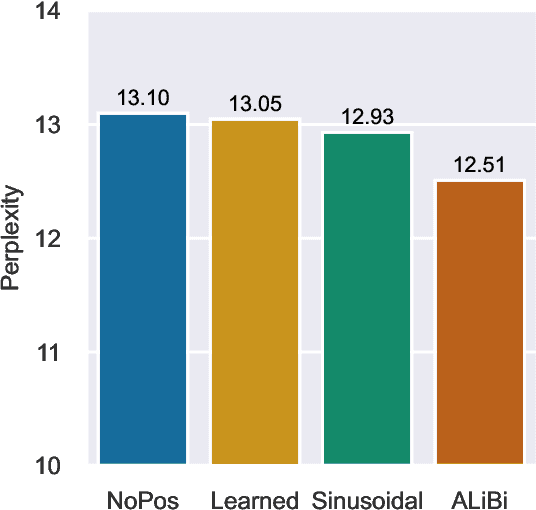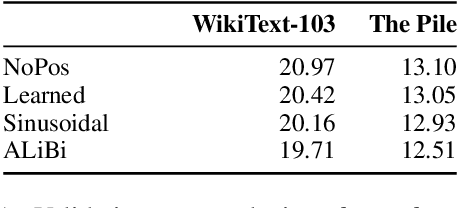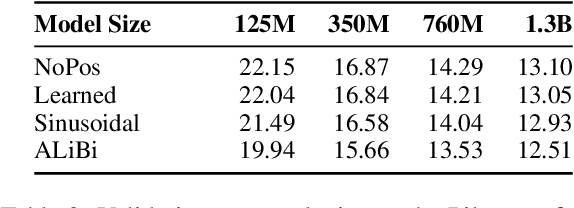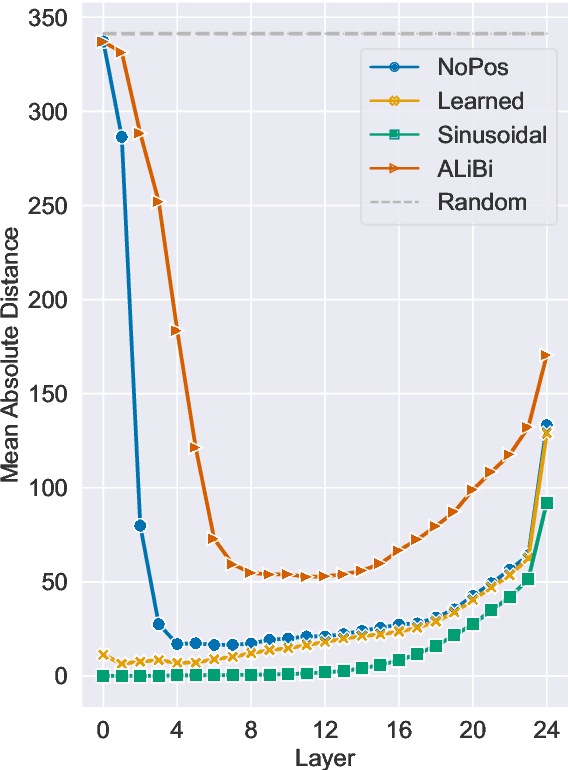Transformer Language Models without Positional Encodings Still Learn Positional Information
Paper and Code
Mar 30, 2022



Transformers typically require some form of positional encoding, such as positional embeddings, to process natural language sequences. Surprisingly, we find that transformer language models without any explicit positional encoding are still competitive with standard models, and that this phenomenon is robust across different datasets, model sizes, and sequence lengths. Probing experiments reveal that such models acquire an implicit notion of absolute positions throughout the network, effectively compensating for the missing information. We conjecture that causal attention enables the model to infer the number of predecessors that each token can attend to, thereby approximating its absolute position.
 Add to Chrome
Add to Chrome Add to Firefox
Add to Firefox Add to Edge
Add to Edge